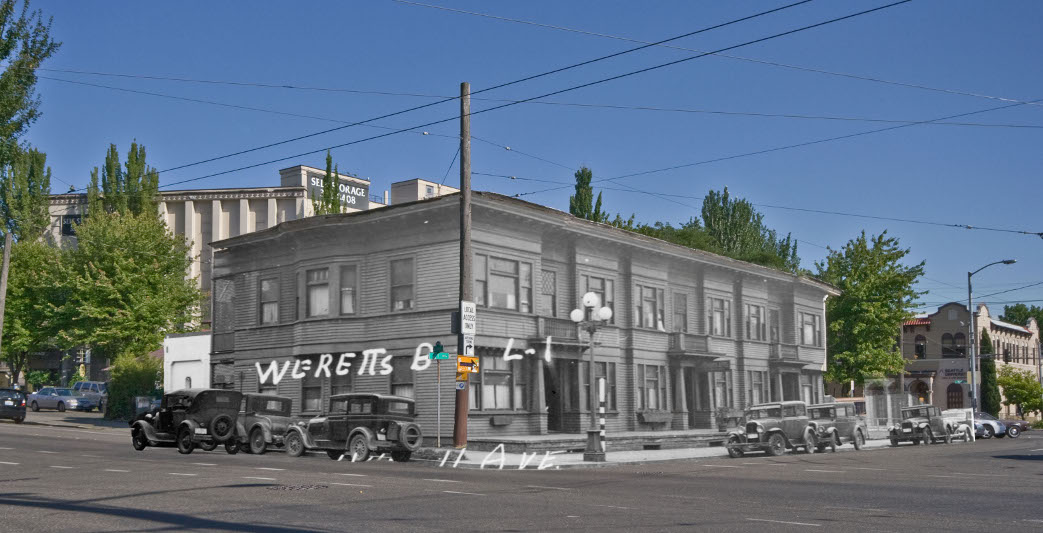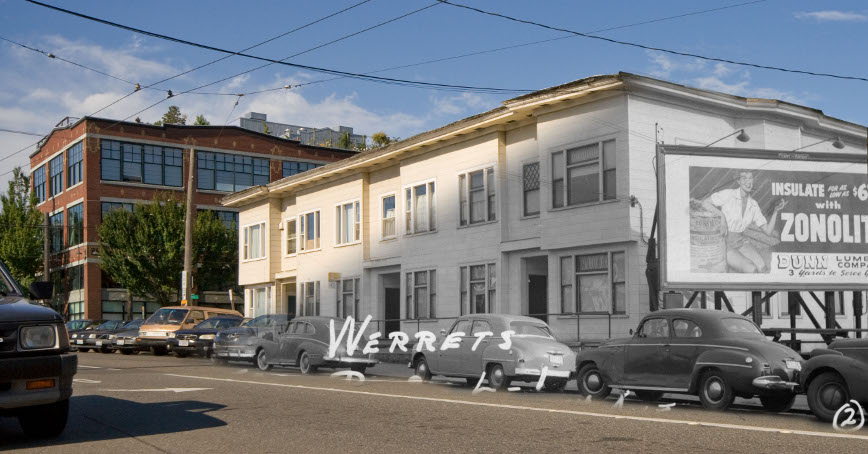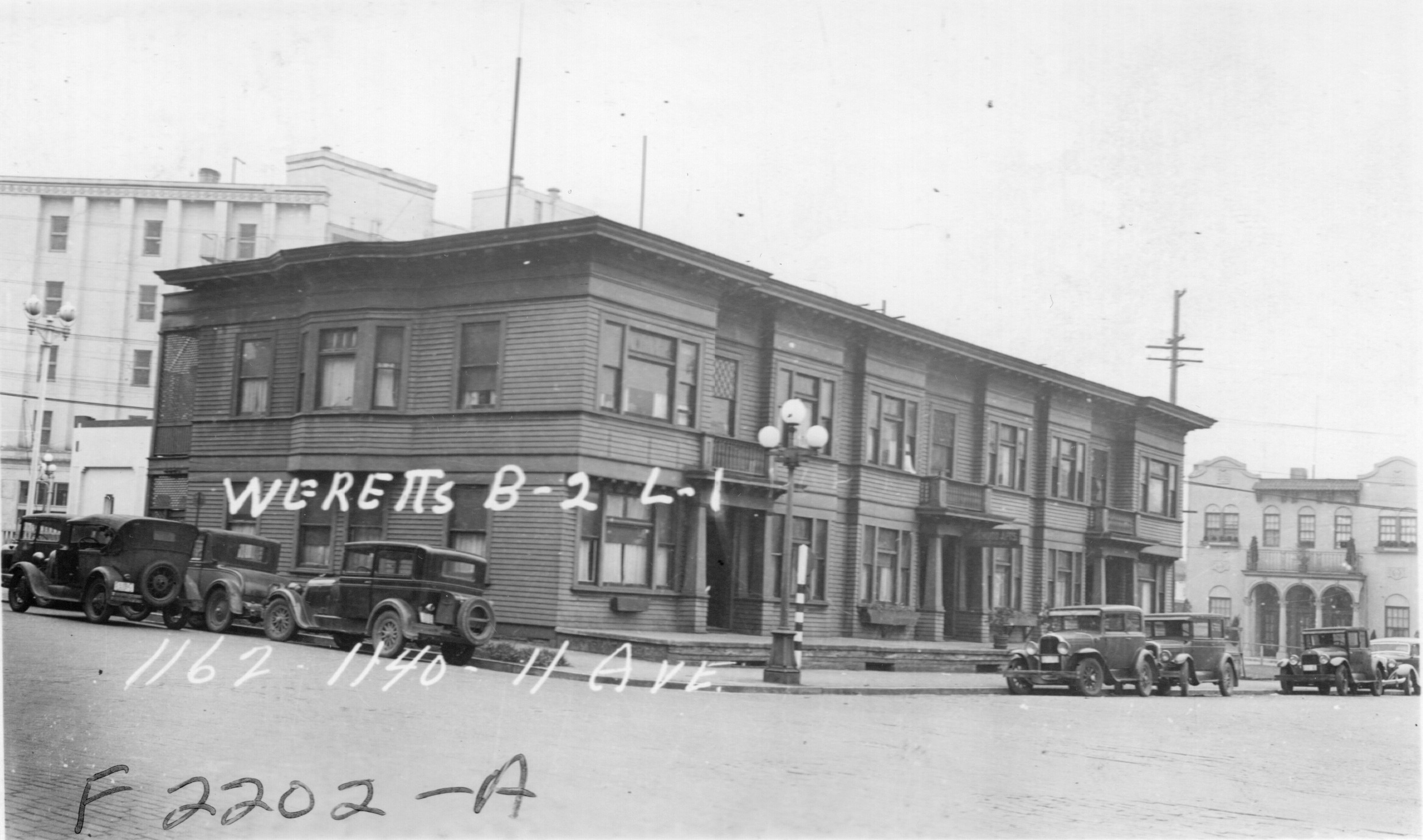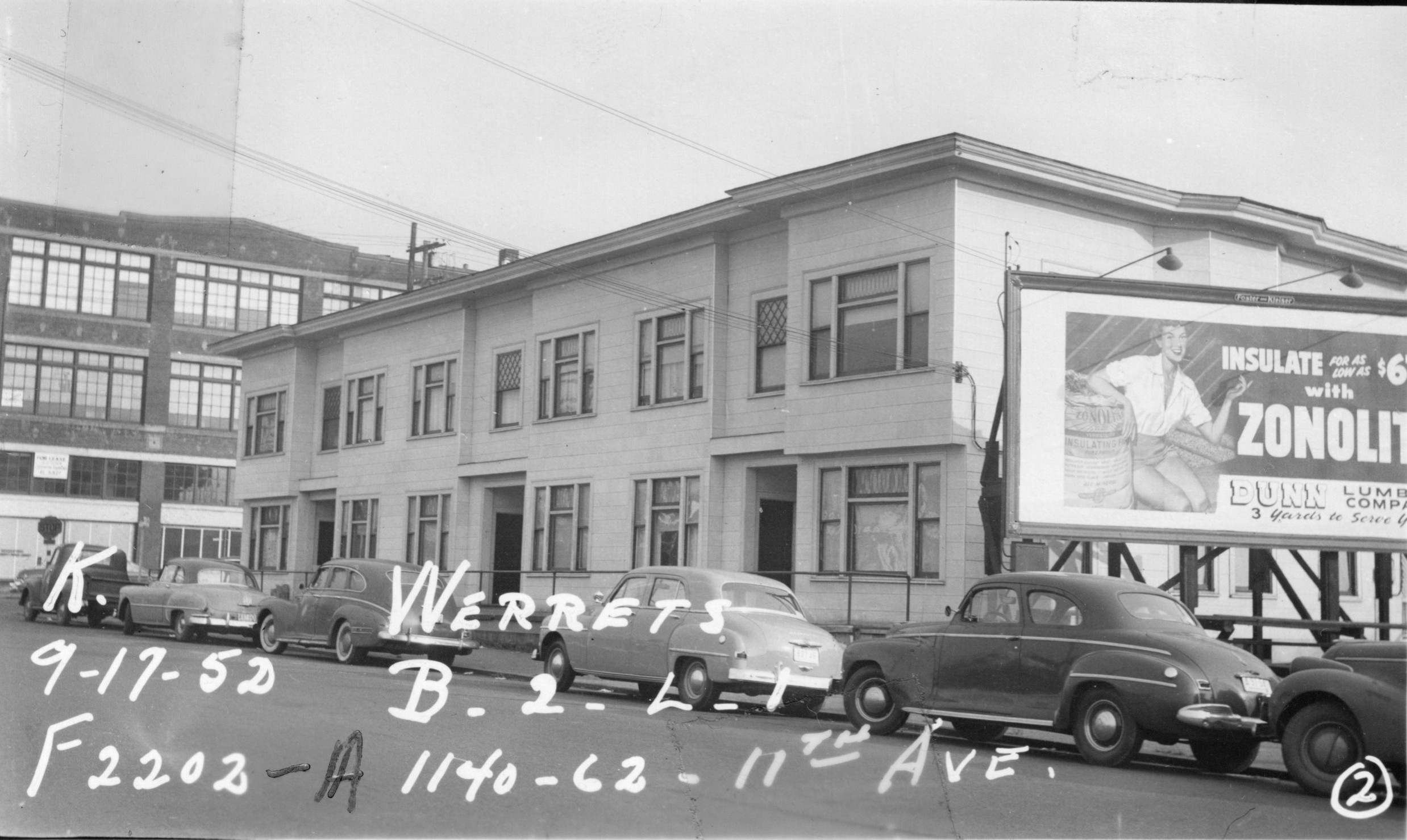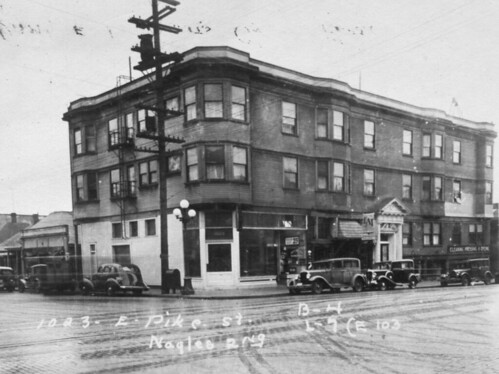As many readers of Capitol Hill Seattle Blog are likely aware, Pike/Pine (and the area around it) was once Seattle’s original Auto Row, with many of the buildings here originally built as auto showrooms, workshops, and parts stores. But there are a few exceptions to this; Broadway High School (a portion of which survives as Broadway Performance Hall), built in 1903, a couple of years before the first dealership opened on the hill, predates auto-row. The 1911 First Covenant Church (originally Swedish Tabernacle) was built during the auto-row era, but clearly not as an auto-related structure. And the building that is today home to Tully’s Coffee on Broadway and Pike – well, that’s a bit more complicated.
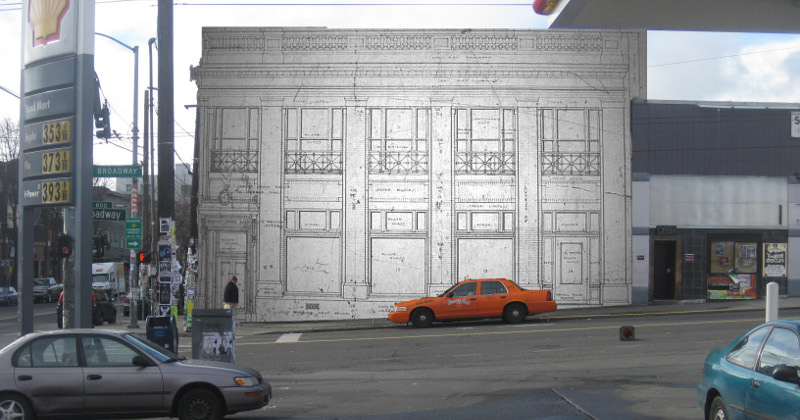 Mash-up of current location and 1913 Architect’s drawing
Mash-up of current location and 1913 Architect’s drawing
The story behind that building starts a few blocks to the north, outside of auto-row, at 235 E Broadway, now home to Jai Thai, but back then home to Leary’s Pharmacy. In 1911, the pharmacist, Mr P Leary, encouraged a group of investors from Seattle and British Columbia to invest in a new bank project, and the Broadway State Bank opened its doors in an existing building at Broadway and Denny later that year.
Business was booming, buoyed by the auto trade nearby – and retail along Broadway – and a couple of years later in 1913, the bank announced plans to build and move to a new more spacious home, at the corner of Broadway and Pike, right in the heart of Auto Row. “The Broadway district has expanded beyond our fondest expectations” the bank’s President W P Philips said at the time, “Pike Street and Broadway are becoming important business centers.”
The existing wood frame in that location was razed, and in its place was erected the building we know today – “Absolutely fireproof” and “Built of steel and concrete, with cream glazed brick finish”, said Seattle Times in July 1913, “the new Broadway State Bank will be one of the finest in this rapidly developing district.” Doors opened in November that year.
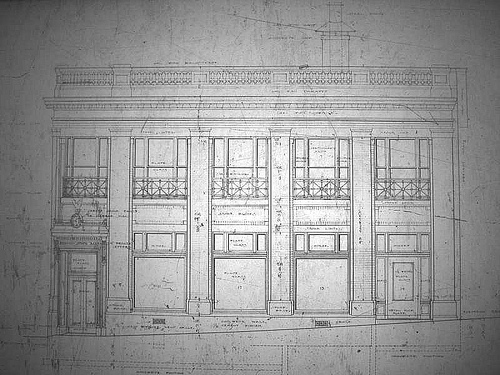 1913 Architect’s drawings by Beezer Brothers, from Seattle DPD.
1913 Architect’s drawings by Beezer Brothers, from Seattle DPD.
The architects for this project were the Beezer Brothers, a firm headed by the twins Louis and Michael J Beezer, originally from Pennsylvania, and who designed several churches and houses in Pittsburgh before arriving in Seattle in 1907. Here they worked on many commercial and residential and projects (including two houses in Capitol Hill’s historic Harvard-Belmont district), but are perhaps best known for projects associated with the local Roman Catholic diocese, including St. Joseph’s school and rectory on 18th, and Immaculate Conception School at 18th and Cherry.
Alas, things did not work out so well for the bank: its doors remained shut on the morning of January 18th 1917, having been taken over by an examiner after failing victim to bad management. Rumors that the Northern Bank and Trust Company – which was based in the Seaboard building on Westlake Park downtown, today home to a branch of Seattle’s Best Coffee – was somehow involved in the Broadway State Bank’s affairs lead to a run on that bank also, setting off a panic among Seattle’s banks.
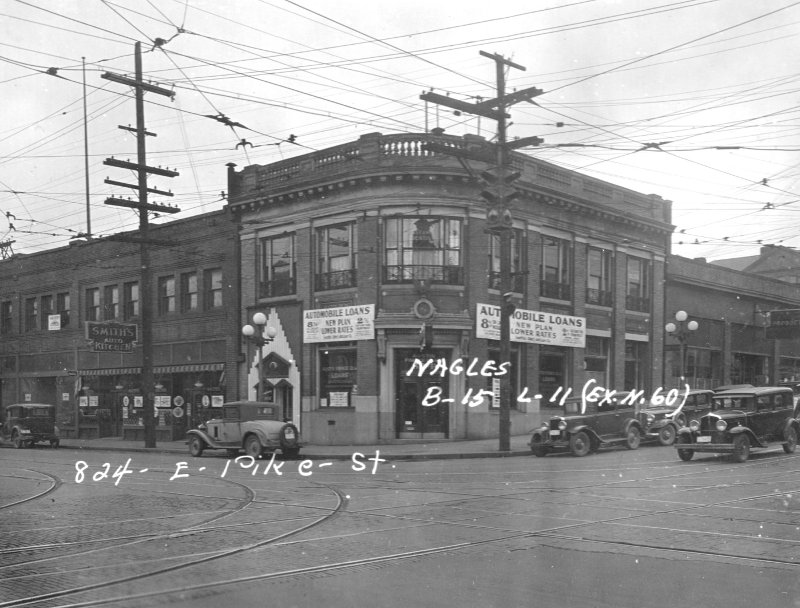 1937 Photo from Puget Sound Regional Archives
1937 Photo from Puget Sound Regional Archives
The intervening years saw a variety of other tenants, including an automobile financing company, and a general insurance firm. In the 50s, the building was home to the offices and recording studios of pioneering Seattle record label Linden Records. More recently, the building was home to a Quality Rentals rent-to-own furniture store (the owners of which still own the building), which in 2000 was replaced by the current tenant, Tully’s.
So, from Bank to coffee house? Almost: the previous building in that location was a mixed use building with apartments above commercial; and thanks to a cash register looting incident in January 1907 which was reported in the Seattle Times of the day, we know the name of one of the business which called that location home before the bank was built: Broadway Coffee House. Plus ça change…
Brendan McKeon is a budding amateur historian and volunteer tour guide with the Seattle Architecture Foundation, and will be one of the guides on their Pike/Pine walking tour, which has its next outing on Sat July 14th, and three other dates after that this season.



